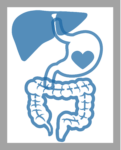Esophageal dilatation is a therapeutic endoscopic procedure that enlarges the lumen of the esophagus.[1]
Indications
It can be used to treat a number of medical conditions that result in narrowing of the esophageal lumen, or decrease motility in the distal esophagus. These include the following:
- Peptic stricture
- Eosinophilic esophagitis[2]
- Schatzki rings
- Achalasia
- Scleroderma esophagus
- Rarely esophageal cancer
Types of dilators
There are three major classes of dilators:[citation needed]
- Mercury-weighted bougies are blindly inserted bougies placed into the esophagus by the treating physician. They are passed in sequentially increasing sizes to dilate the obstructed area. They must be used with precaution in patients with narrow strictures, as they may curl proximal to the obstruction.
- Bougie over guidewire dilators are used at the time of gastroscopy or fluoroscopy. An endoscopy is usually performed first to evaluate the anatomy, and a guidewire is passed into the stomach past the obstruction. This may also be done fluoroscopically. Bougies are again introduced—this time over the guidewire—in sequentially increasing sizes.
- Pneumatic dilatation or balloon dilatation is also typically done at the time of endoscopy or fluoroscopy. A balloon is inserted in the deflated form into the area of narrowing. It is then inflated with air to a certain pressure that is pre-set for a given circumference.
Complications
Complications of esophageal dilatation include the following:[citation needed
- Odynophagia, or painful swallowing
- Hematemesis, or bloody vomit
- Esophageal perforation
- Mediastinitis
